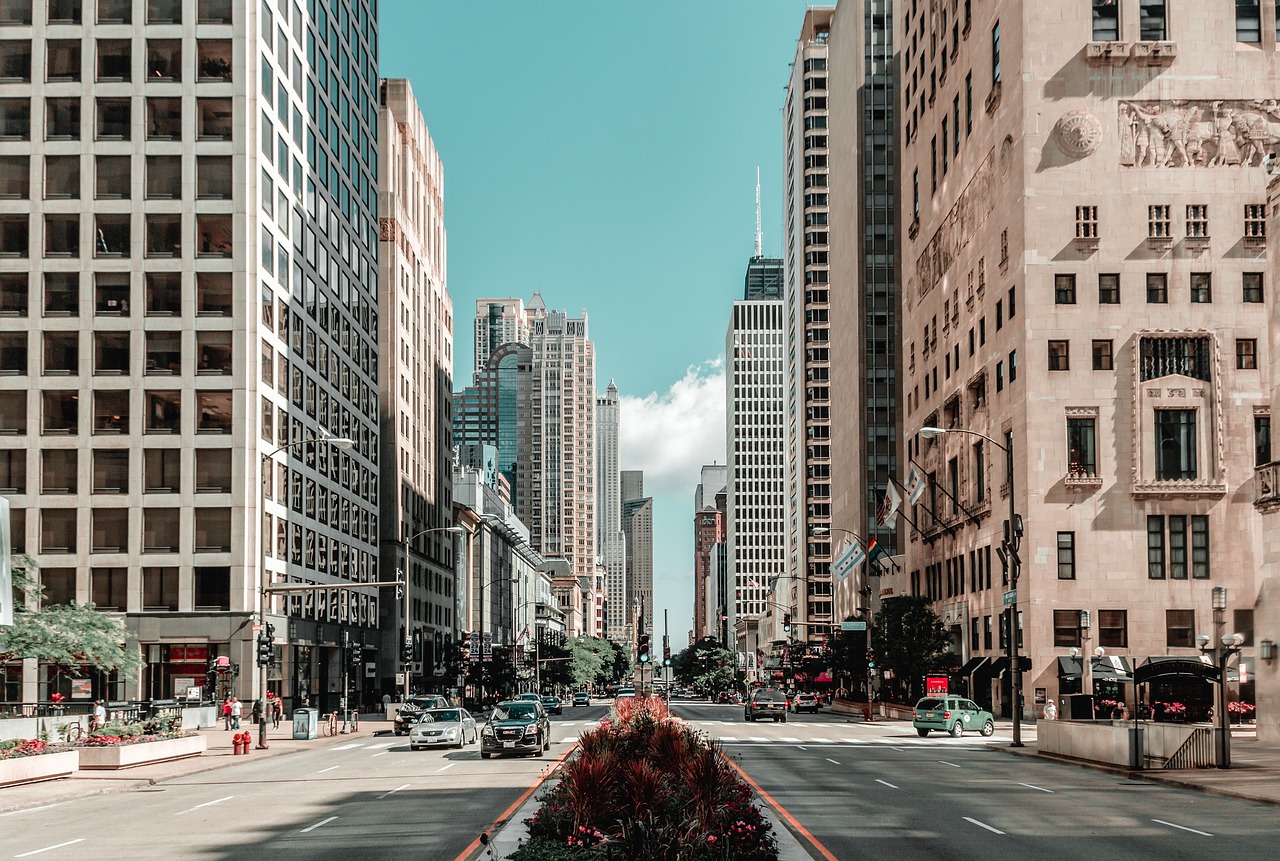How to redesign our cities to make them heat resistant. Report Ft

"A neighborhood with asphalt and concrete can be several degrees warmer than one with shady trees," writes the Financial Times
In July 1995, hot, humid, slow-moving air mass swept over Chicago and remained there for a week. Roads and railroad tracks gave way. The lifts were watered to prevent thermal expansion from blocking them. The stores ran out of air conditioners. The demand for electricity led to blackouts.
Then people began to die, simply unable to cope with the humidity and heat day in and day out.
There is no official estimate of the death toll, but it is often estimated that there are more than 700 people. As with Covid-19, most were elderly, but epidemiologists later estimated that most of those elderly were not in danger of imminent death.
The disaster received far less attention than, for example, the 1989 earthquake, which killed less than a tenth of the people in San Francisco and Oakland. This is not surprising. Heat doesn't look impressive on television. That said, the world has noticed the refrigerated trucks in the Cook County Coroner's Office parking lot. They had been offered by a local meat packer to help cope with the excess bodies from the morgue.
The heat continues to be a killer. The World Health Organization estimates that, between 1998 and 2017, 166,000 people died from heat waves, a total that eclipses many more photogenic natural disasters, the FT writes.
Extreme heat is becoming more common. Professor Peter Stott of the Met Office in the UK told me that the recent heatwave in North America, when temperatures soared to 50C in Canada, could have been expected roughly every 60,000 years in the pre-industrial climate. In the modern world, heated by many decades of greenhouse gas emissions , one could predict once every 15 years or so.
We will have to get used to scorching temperatures and suffocating humidity. Which makes it even more important to understand what happened in Chicago a quarter of a century ago.
Researchers from the Centers for Disease Control and Prevention of the United States carefully studied the problem and concluded that "the people most at risk of dying from the heat were those with medical illnesses who were socially isolated and did not have access to air conditioning" .
This is not wrong, but not particularly useful either. Why didn't people have access to air conditioning? The city was filled with air-conditioned spaces, many of which – such as libraries and shops – were open to anyone, free of charge. And why were people so left out, even in a crisis? As the great urban observer Jane Jacobs said at the Chicago Sun-Times, "It took a lot of effort to make people so isolated."
In his 2002 book Heat Wave: A Social Autopsy of Disaster in Chicago, sociologist Eric Klinenberg went under the surface of catastrophe. The CDC analysis had compared pairs of individuals, contrasting those who had died with seemingly similar individuals who had not died. Klinenberg compared two adjacent Chicago neighborhoods: North Lawndale and South Lawndale. North Lawndale had a heat wave death rate 10 times higher than South Lawndale. Because?
Both neighborhoods were full of poor elderly people living alone and both were predominantly non-white. But in other ways they were different. North Lawndale was depopulated, an urban wasteland with vacant lots. Gangs used it as a convenient place to sell drugs.
“We used to sit outside all night and just talk,” said one resident. But with the bullets flying, this became impossible. Large employers such as International Harvester, Sears Roebuck, and Western Electric had relocated and stores had closed. People did not leave their apartments because they were afraid of being robbed or robbed. They weren't used to walking to local shops – and there weren't many local shops to walk to.
South Lawndale, by contrast, was overcrowded, but as a result it felt lively – and safe. (The area is now known as “Little Village”.) You could walk out your door at any time and there were people around.
When the heatwave hit, senior residents were happy to walk into a nearby air-conditioned store and step out. They felt safe leaving an empty apartment. When they were at home they felt safe opening the door to people who came to check on them. In a heat wave, the bustling streets save life.
Neighborhoods can also be subject to or resistant to heat waves in more literal ways, as a recent article in Nature argues. An urban block with asphalt and concrete, little shade, and rapid water drainage can be several degrees warmer than one with the shade of trees or patches of vegetation that catch the water and let it evaporate. It will come as no surprise to anyone that greener neighborhoods tend to be cooler.
The effect is great. A recent study in Climate magazine found that historically "delimited" areas in US cities – mostly African-American, denied federal mortgage support in the 1930s and long marginalized thereafter – are on average 2.6 C warmer.
It's all pretty depressing, but there's also an opportunity. It is inevitable that we will have to adapt to climate change, and adaptation is often thought of as an expense: large dams, flood barriers and weather protection.
But if climate change adaptation means supporting vibrant neighborhoods, planting trees, reducing crime, and encouraging local businesses, that's something we definitely want to do, no matter what the climate throws at us.
(Extract from the foreign press review by Epr Comunicazione)
This is a machine translation from Italian language of a post published on Start Magazine at the URL https://www.startmag.it/energia/come-riprogettare-le-nostre-citta-per-renderle-a-prova-di-canicola-report-ft/ on Sun, 15 Aug 2021 06:39:04 +0000.
